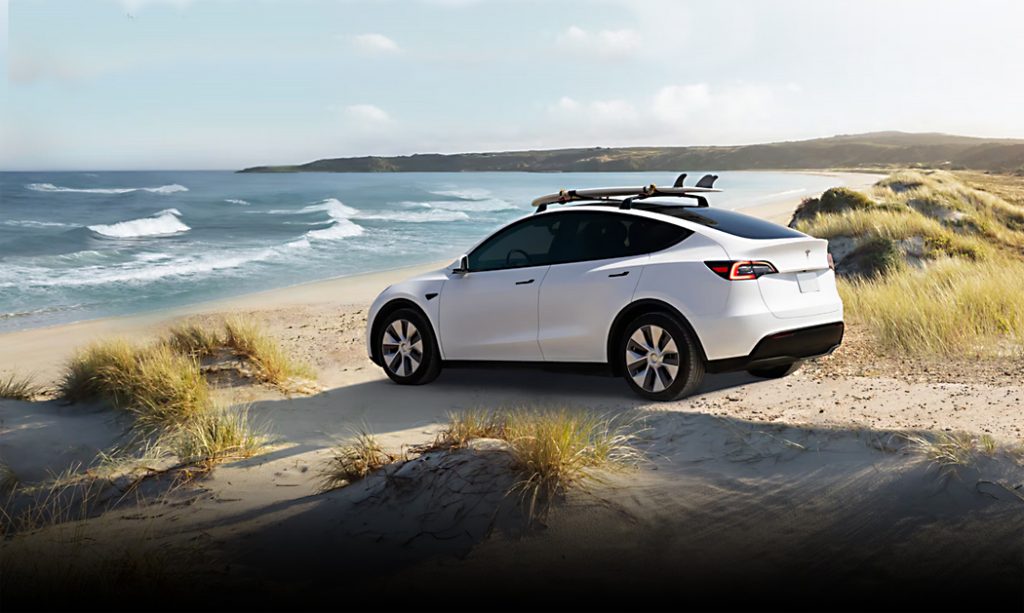
Someone asked me recently if I drove an electric vehicle. I chuckled—thinking to myself that I’d love to have one, but it’s out of reach on a retiree’s income.
Then it occurred to me that I could use GoFundMe to raise the money. All of you could contribute to my new Tesla.
Just kidding.
But it sure would be fun to have one. Not only are they arguably better for the environment, but they are also cool gadgets. I love gadgets.
Take the Swedish Polestar 2. Its central display doubles as an entertainment center, offering a web browser, YouTube, and Amazon Prime Video streaming. Of course, it also offers more prosaic features such as Waze, which alerts you to traffic issues ahead, a route planner, weather information, and more.
While that sounds great, the display is unfortunately only 11.2 inches. Paltry compared to the 55-inch touchscreen display coming out this year in the new Cadillac Escalade IQ—a car that will cost $130,000. Time to up my GoFundMe target.
It stretches across the entire dashboard and is divided into two: a 35-inch display on the driver’s side, and a smaller display on the passenger side. And to avoid the driver being distracted by the passenger’s display, it’s polarized so it’s not viewable to the driver when the car is out of park.
But what about the passengers in the back seat? They get screens, too: twin seatback 12.6-inch screens.
How cool is the Escalade? Not as cool as the MBUX Hyperscreen available in Mercedes electric vehicles. This infotainment screen offers our old friend ChatGPT. You can now converse with your car. Time to up my GoFundMe a bit more.
According to the company, “Users will experience a voice assistant that not only accepts natural voice commands but can also conduct conversations. Soon, participants who ask the Voice Assistant for details about their destination, to suggest a new dinner recipe, or to answer a complex question will receive a more comprehensive answer—while keeping their hands on the wheel and eyes on the road.”
I need this.
What could be better? Why not just use the whole windshield as the display? That’s what Rivian has in mind with its patent for an “Augmented Reality Windshield Display System” that would project graphics onto the windshield to show things such as speed, route guidance, vehicle data, and notifications. Tesla has similar patents. But such tech is not imminent.
Of course, electric vehicles are stuffed with artificial intelligence features. If you live in Phoenix, San Francisco, Los Angeles, or Austin, you can order up a Waymo taxi to take you to your destination within the city—and you’re the only human in the car. It is being fully driven by artificial intelligence.
The last time we talked about self- driving cars, they were in the experimental stage. Now you simply download the app and summon a driverless taxi. Waymo’s vehicles in the Phoenix area even travel the surrounding freeways.
AI is also used for “preventive maintenance”: analyzing sensor data in order to maintain the vehicle in optimal condition and prevent breakdowns. In addition, autonomous driving features help drivers navigate complex traffic situations, prevent accidents, and identify the fastest routes.
Brands like Volvo are implementing AI-powered sensors and cameras to detect hazards, identify pedestrians, and avoid collisions. Driver-assistance systems help identify the best route to take, including charging station suggestions.
Ah, yes, charging stations. That brings up the topic of range anxiety: Does my battery have enough juice to get me there?
Well, there’s a gadget for that, too. The Lightyear One, from a Dutch company, has integrated solar panels on the roof and hood that can add up to 44 miles of charge per day.
Think about it. If you lived in a sunny climate and didn’t drive more than 40 miles per day, you’d never need to plug in your car. Other manufacturers are looking into this, and some aftermarket companies offer attachable solar panels, but output is more modest.
Tesla offers small mobile solar panels that are designed to supplement the range of Tesla vehicles when camping or during a power outage. They plug directly into the vehicles and add over 15 miles of driving range per day.
So what else? For some people, the coolest feature is raw speed. When I was a teenager, that was the top consideration. A high-performing Tesla can accelerate so quickly that the front end lifts slightly off the ground. Electric motors provide instant torque.
Absent a windfall, I’ll have to make do with my 18-year-old Camry. It has its tires planted firmly on the ground when I accelerate. And I don’t have much need to talk to it. Even without so-called predictive maintenance, it chugs along year after year.
Maybe I already have enough gadgets in my life.
Find column archives at JimKarpen.com.
